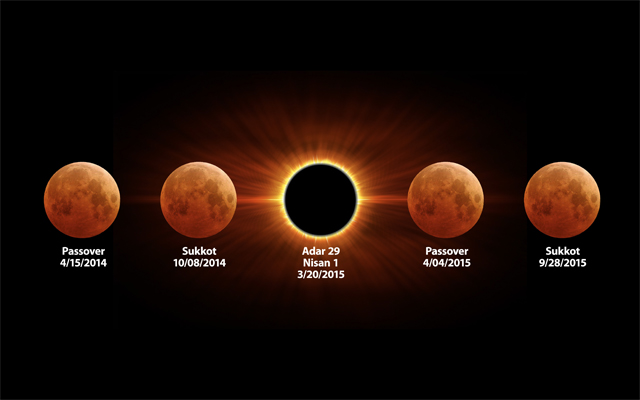October 7, 2014
The second blood moon of 2014 is approaching. The first appeared April 14-15, and this week’s is the second in a ‘tetrad,’ or series of four.
Skywatchers across much of the world will have the chance to see the moon glowing with an eerie red pallor during a pre-Halloween total lunar eclipse (tomorrow).
The “blood moon” total lunar eclipse will rise during the full moon of Oct. 8 just before sunrise in North America, but red might not be the only color people see during the total eclipse. Weather permitting, it’s possible that some sharp-eyed observers might be able to see some blue in the moon’s glow. The event will be the second of four consecutive total lunar eclipses in 2014 and 2015, according to NASA officials.
On the East Coast of the United States, totality starts at 6:25 a.m. EDT, but stargazers on the West Coast of the United States will have an even better chance of seeing the rusty glow of the moon during totality. The eclipse will occur between 3:25 a.m. PDT and 4:24 a.m. PDT Wednesday. Observers in Australia and countries along the Pacific Ocean will also have the chance to see the eclipse.
“It promises to be a stunning sight, even from the most light-polluted cities,” NASA eclipse expert Fred Espenak said in a statement. “I encourage everyone, especially families with curious children, to go out and enjoy the event.”

A total lunar eclipse tetrad
(Tomorrow)’s eclipse is the second in a so-called total lunar eclipse tetrad, a series of four consecutive eclipses that began earlier this year. The first total eclipse tetrad occurred in April. The next total eclipse in the series will occur on April 4, 2015, and the fourth eclipse will rise on Sept. 28, 2015.
During total lunar eclipses, the moon passes into Earth’s shadow, causing the planet to darken the face of the moon, according to NASA. Instead of making the moon go completely dark, the moon shines with a rosy hue during a total eclipse because it reflects light from the sun coming through Earth’s atmosphere.
The color of the moon during a lunar eclipse actually depends on Earth’s atmosphere. For example, a lot of volcanic activity on the planet can pollute the atmosphere and make the moon seem very dark in color during an eclipse, according to NASA.
“Despite some recent eruptions that look spectacular from the ground, there have been no large injections of volcanic gases into the stratosphere,” atmospheric scientist Richard Keen of the University of Colorado said in the same statement. “In the absence of volcanic effects, I expect a rather normal reddish-orange lunar eclipse similar in appearance to last April’s eclipse”. READ.
***
Welcome back Jesus? Christians say ‘Blood Moon’ signals End Times (April 15, 2014)

